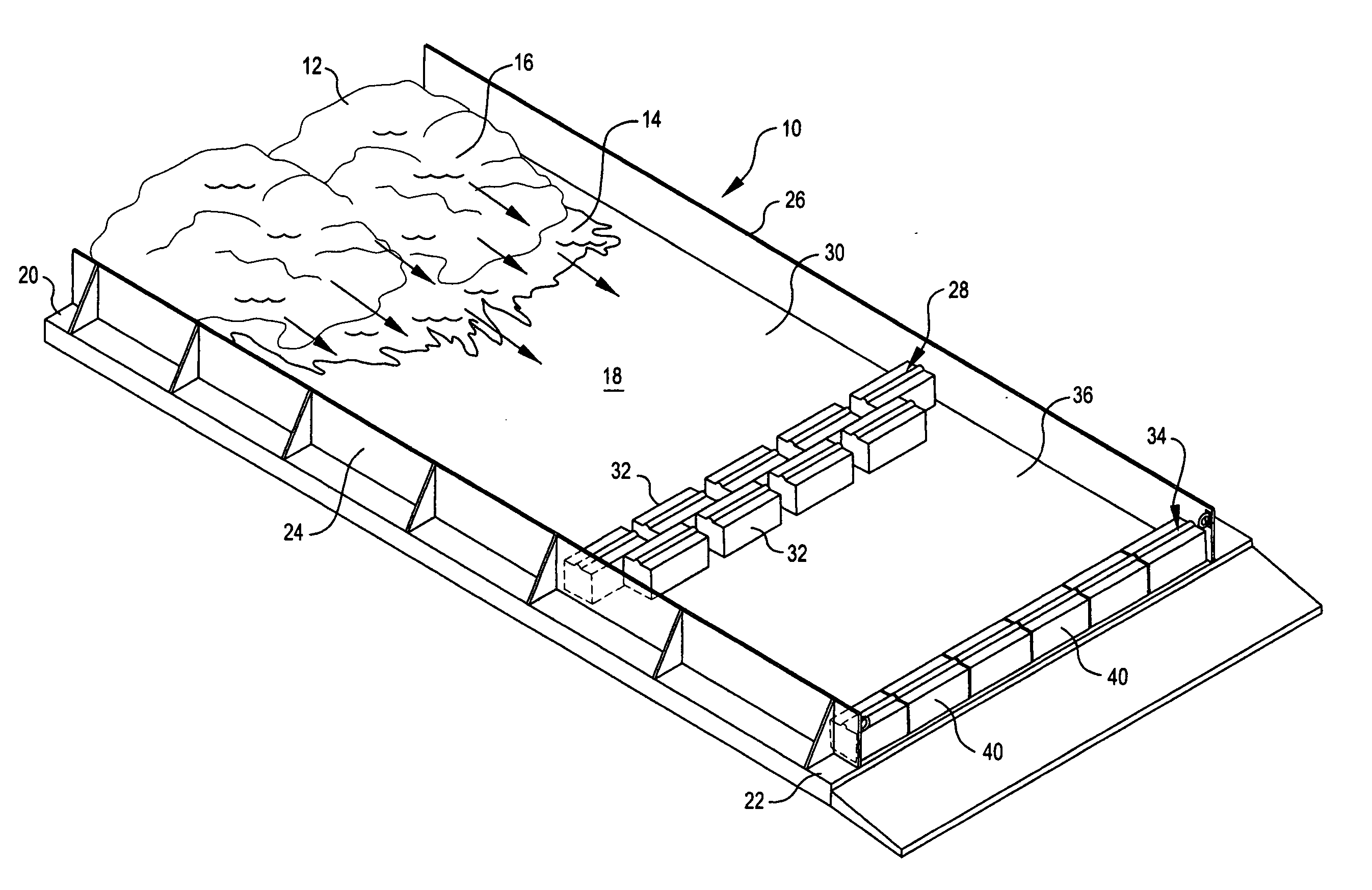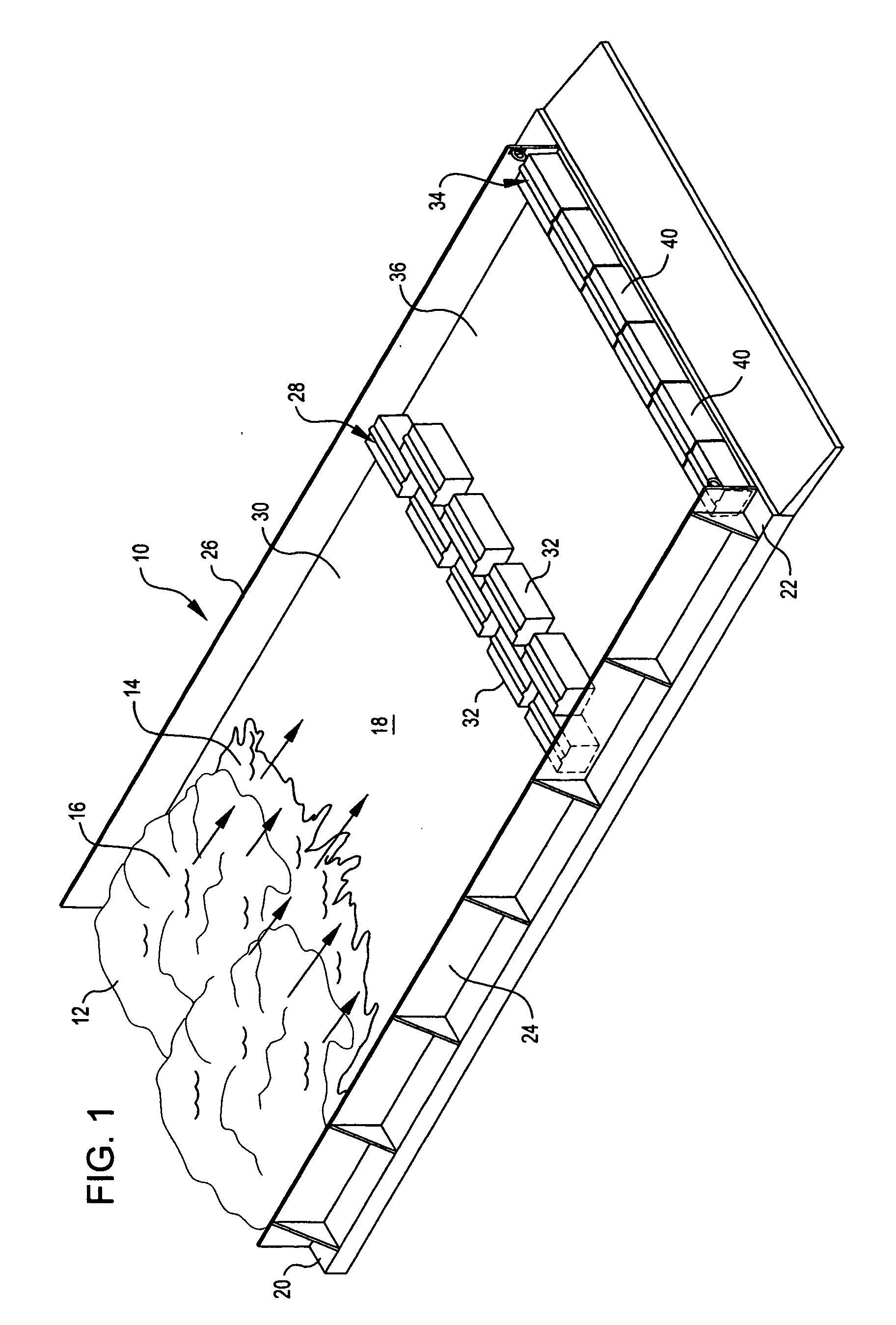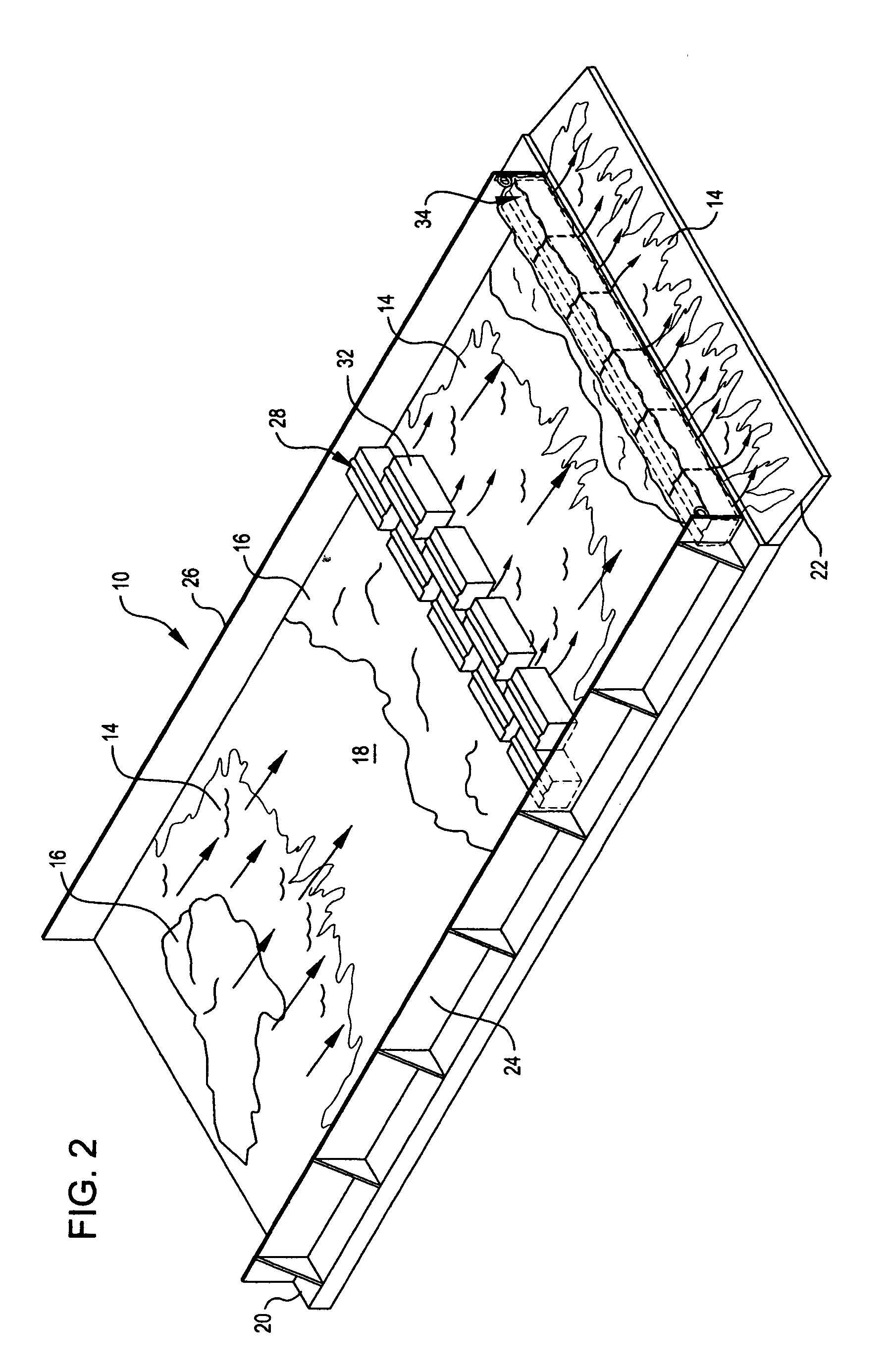System and method of dewatering dredge spoils using sloping drain barge
a technology of dredging spoils and drain barges, which is applied in the direction of machines/engines, foundation engineering, sedimentation settling tanks, etc., can solve the problems of what to do with spoils and water being brought up as an unavoidable consequen
- Summary
- Abstract
- Description
- Claims
- Application Information
AI Technical Summary
Problems solved by technology
Method used
Image
Examples
Embodiment Construction
[0016] Referring to the drawings and in particular to FIG. 1, an apparatus 10 for dewatering dredge spoils 12 is illustrated. As used herein, the term “dredge spoils” will be understood to mean materials that are removed from a waterway during dredging operations. Regardless of the particular waterway and bottom involved, and regardless of the purpose for which the dredging operation is being carried out, the dredge spoils will be understood to contain both a liquid component 14, such as water, and a solid component 16, such as mud, silt or sand, suspended in the liquid. The general function of the dewatering apparatus 10 and method shown and described herein, is substantially to separate the solid components 16 of the dredge spoils from the liquid component 14. The liquid component 14 can then be returned to the waterway while the solid components 16 are collected for disposal elsewhere. It will be understood that these are relative terms, and that in practice, the complete separat...
PUM
| Property | Measurement | Unit |
|---|---|---|
| movement | aaaaa | aaaaa |
| depth | aaaaa | aaaaa |
| distances | aaaaa | aaaaa |
Abstract
Description
Claims
Application Information
 Login to View More
Login to View More - R&D
- Intellectual Property
- Life Sciences
- Materials
- Tech Scout
- Unparalleled Data Quality
- Higher Quality Content
- 60% Fewer Hallucinations
Browse by: Latest US Patents, China's latest patents, Technical Efficacy Thesaurus, Application Domain, Technology Topic, Popular Technical Reports.
© 2025 PatSnap. All rights reserved.Legal|Privacy policy|Modern Slavery Act Transparency Statement|Sitemap|About US| Contact US: help@patsnap.com



